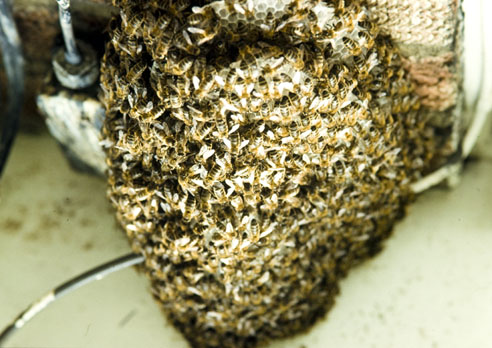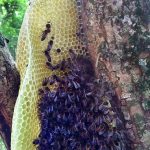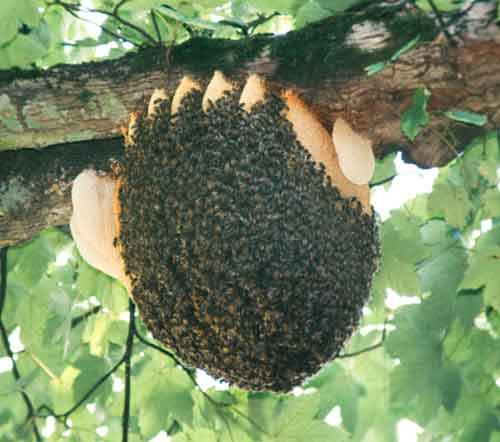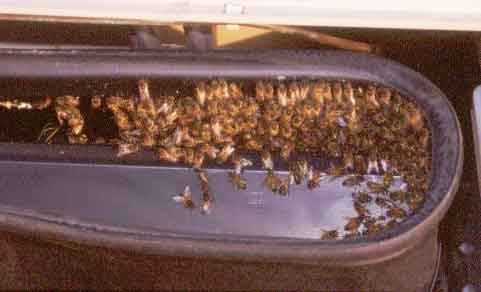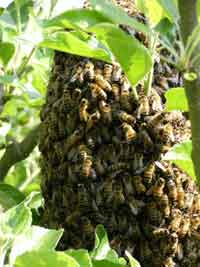First of all is it a swarm?
If you are panicking that you have a swarm first see what the insects look like and how big they are. Do they look like any of these? The two on the left are honey bees and the three on the right solitary bees; the two in the middle are bumble bees. If they are bumble bees there will be relatively few and they are 'fluffy', while honeybees are slimmer and would be present in the thousands.
So, it could be a bumblebee nest or lots of solitary bees. Or even a wasps' nest. You can visit the British Beekeepers Association for further information.
Help with Swarm Removal
If you have a swarm that is not in a wall, chimney or roof and you want to get rid of ... DON'T PANIC ... a beekeeper will probably be able to remove it.
Contact Ian White 07999987097
A Little About Swarms
Honey bee colonies are super-organisms; individuals can not survive on their own, they live and work together as a whole like the cells in your body. To reproduce a colony swarms, something that can be very spectacular and quite intimidating. The thousands of bees that leave the colony with the old queen are usually perfectly content and not intent on stinging; they are full-up with food and looking for a new home. The mass of flying bees settle and rest on some convenient structure (for them) such as a hedge, on a branch, side of a wall. Scout bees then search for somewhere to move to. Once found the swarm lifts off and flies to its new home which can be inconvenient for you.
If you have a swarm of honeybees in your cavity walls, chimney or soffits it is unlikely that a beekeeper will to be able to remove them and you would have to seek professional advice (ensure that whoever you get is qualified and insured).
